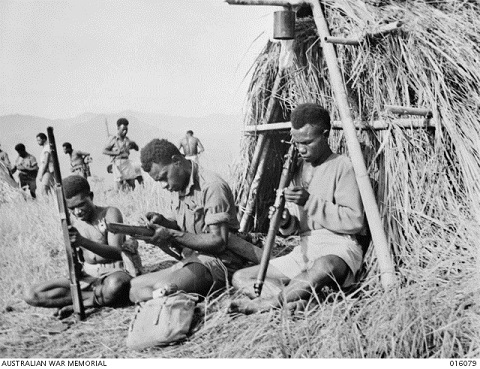Uncovering Papua New Guinea's forgotten war history
Media releaseResearch teams coordinated by Deakin University researcher Dr Jonathan Ritchie will visit Papua New Guinea in 2016 to continue an oral history project that aims to shed light on the country’s experience of World War Two.
In 2014, the project team visited significant sites in the vicinity of the Kokoda Track and recorded interviews with more than 70 Papua New Guinean veterans and their families.
The team – which comprises researchers from Deakin University, PNG’s Pacific Adventist University, the University of Papua New Guinea, and PNG’s National Museum and Art Gallery – visited locations in PNG’s Northern and Central Provinces including Hanau, Deboin, Beama, Popondetta, Kovelo, Kagi and Sogeri.
The Kokoda oral history pilot study was funded by the Australian Government under the Kokoda Initiative, which supports communities living along the Kokoda Track.
Now, thanks to further funding from the Australian Government through the Strongim Pipol Strongim Nesen program, the teams will travel deeper into Papua New Guinea to gather stories from many other parts of the country which experienced the massive disruption brought about by World War Two.
Dr Jonathan Ritchie, Senior Research Fellow at the Alfred Deakin Institute for Citizenship and Globalisation and head of the research exercise, believes the project is unveiling what has been a hidden past.
“Each year, thousands of Australian trekkers pass through tiny villages on their way to and along the famed Kokoda Track but few would be aware of the toll World War Two took on local people and their families,” Dr Ritchie explained.
Dr Ritchie said that while the iconic image of Fuzzy Wuzzy Angels carrying injured Australian and American troops out of the jungle rings true, there are many more stories to be told.
“After the war, the Papua New Guineans also played a significant role in exhuming bodies for reburial in authorised war cemeteries,” said Dr Ritchie.
“Many local villagers were employed as medical orderlies, policemen and soldiers with the Papuan Infantry Battalion.
“Some, such as Lancelot Dauma’s uncle, Mapusa, never returned home. Lancelot told us about his father, Daripusa, who would sneak away from the new camp each night to take his brother food and carry him forward along the Kokoda Track. Eventually, they made it to the hospital at Salamaua but Daripusa knew that his brother would die. He dressed his brother in new clothes and traditional armbands and while Daripusa went to do his carrier work during the day, his brother passed away. Daripusa had to deliver the news to his family on his return.”
Dr Ritchie explains that the role of women during this time was also quite diverse.
“Whole families were displaced and forced from their villages into the bush. Some women, when patrol officers recruited their husbands, would follow them to the nearby station only to be told to return to their villages,” said Dr Ritchie.
“A number of women were employed in the army laundries, where they helped to sustain the military effort by washing and ironing extraordinary loads of washing each week while also supporting their families.”
According to Dr Ritchie, the environmental toll of the war has also emerged as a common theme.
“For example, Claude Gegera Peututu – one of the interviewees who has sadly passed away since recording his interview – said ‘the people cried bitterly when they saw how the war had destroyed their land and environment’.”
Dr Kirstie Close-Barry, Associate Lecturer in History at Deakin University, has been collating the interviews and searching through dusty old documents housed in Australian archives to complement the details that have been unearthed.
Dr Close-Barry explains that the project is providing insights for Papua New Guineans and Australians alike.
“We are already feeding this research back to the communities in PNG and Australia, sharing transcripts with history students at the Pacific Adventist University in Port Moresby, preparing conference papers and publication for both Australian and PNG audiences,” said Dr Close-Barry.
“My colleague, Dr Victoria Stead, delivered copies of photographs I found held in the Australian War Memorial back to communities along the Kokoda Track.
“Recording Papua New Guinean voices telling their own histories legitimises the experiences and opinions of PNG peoples and is a step forward in inspiring greater respect and recognition for their role in the war.
“With PNG recently celebrating its 40th anniversary of independence, projects like this offer Papua New Guineans a chance to reflect on the way their nation was constructed.”
Share this story
 New Guinea. 8 November 1943. Three members of a unit of the Papuan Infantry Battalion (PIB) patrol check over their weapons outside their huts at a forward post. Image via Australian War Memorial
New Guinea. 8 November 1943. Three members of a unit of the Papuan Infantry Battalion (PIB) patrol check over their weapons outside their huts at a forward post. Image via Australian War Memorial
